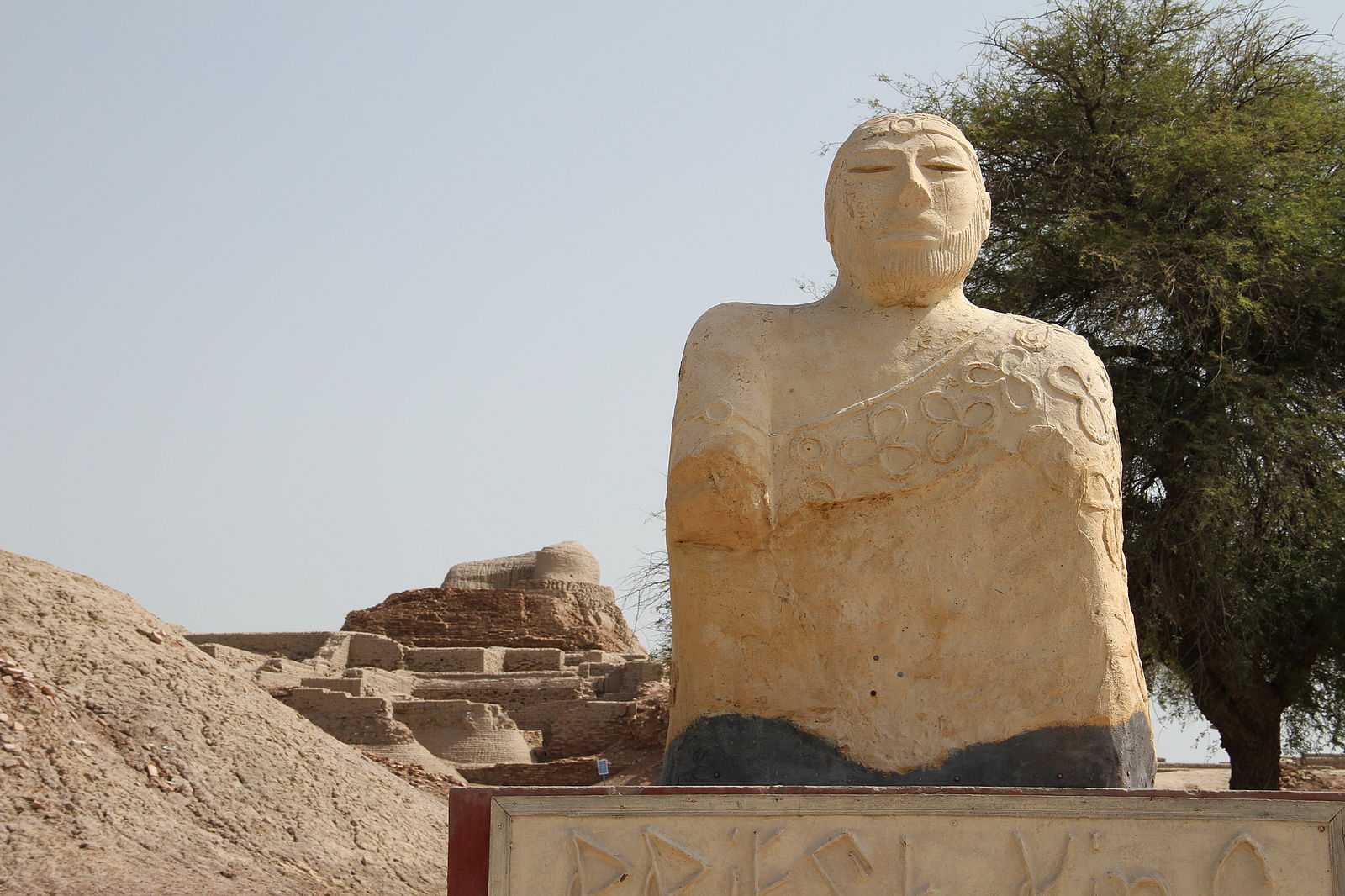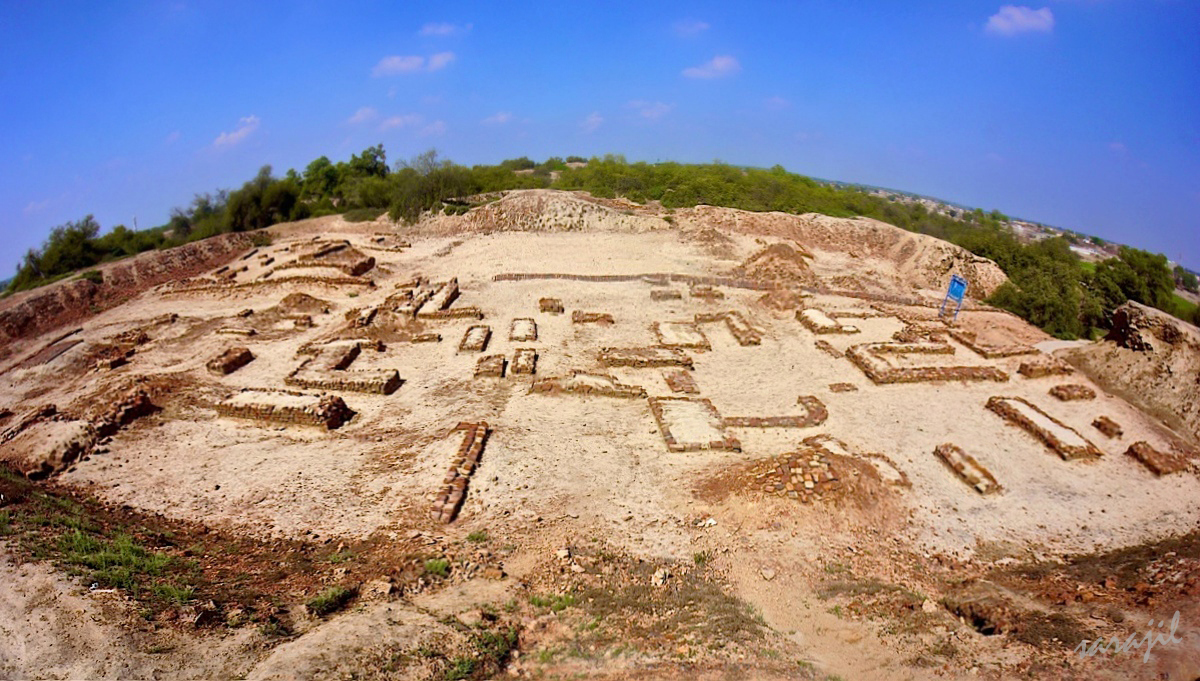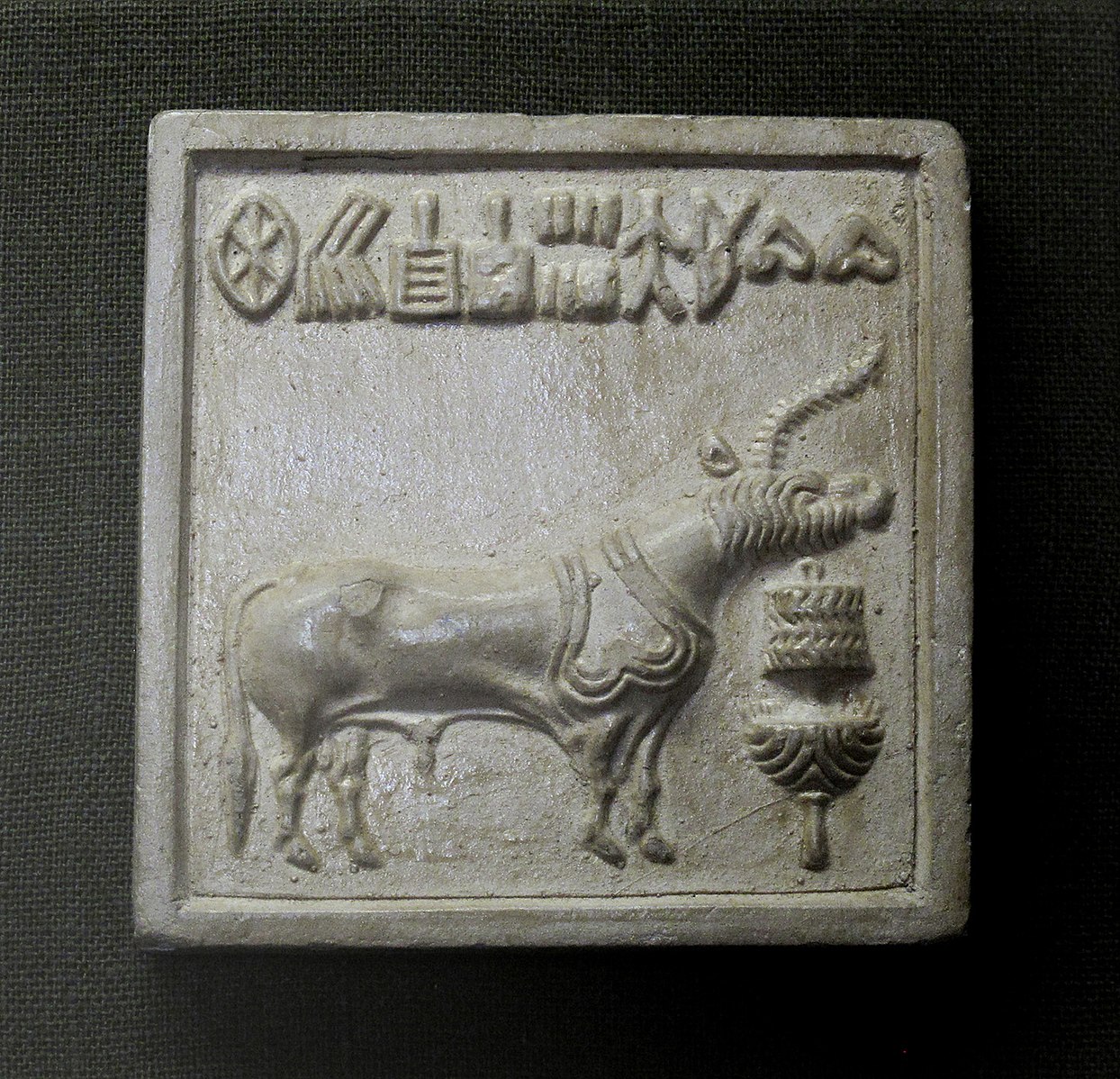
The mysterious Harappan civilization is considered the third oldest one in the ancient East after Egypt and Mesopotamia. It was located in the Indus River Valley in what is now Afghanistan, Pakistan, and parts of India and sparked many theories about its lifestyle and decline.
The area where they were situated also gave rise to an alternative name—the Indus Valley Civilization. Researchers believe that it existed in the period from approximately 7000 BC to 600 BC.
The two most famous cities of the Harappan culture, Harappa and Mohenjo-daro, are located in modern-day Pakistan. Scientists believe they were very densely populated for the ancient world. According to various estimates, from 23,000 to 50,000 people lived there. In total, the Harappan civilization consisted of about five million people.
The original map of Indus valley civilization( Sindhu / Hindu civilization) #india #Sindh #pakistan @UN @UNGeneva @GermanyDiplo @eoiberlin @majorgauravarya @rawnksood @statedeptspox pic.twitter.com/xt8Of459IQ
— Shafi Burfat (@shafiburfat) June 1, 2020
Scientists believe that this civilization was quite developed in terms of “long-distance exchange networks, planned urban settlements, sanitation facilities, standardized weights and measures, and a sphere of influence.” Harrapan houses had running water, and the ancient society itself had a writing system.
The decline of the Harappan civilization is estimated to have occurred from around 2000 BC to approximately 1500 BC, with new theories continuously surfacing regarding its disappearance.
Harappan Civilization’s Discovery
The story of the discovery of the Harappan civilization is connected with a British soldier traitor. James Lewis served in the British East India Company but then deserted the company and changed his name to Charles Masson. He began traveling around India and at the same time excavated ancient monuments.
A street at the ancient city of Harappa (2600-2000 BC), Indus Valley Civilisation; Pakistan.#archaeohistories pic.twitter.com/WKlS7x3BJt
— ArchaeoHistories (@histories_arch) November 5, 2023
As a result, his activities in 1829 led to the discovery of the ancient city of Harappa. Masson initially believed it was founded by Alexander the Great during his Indian campaigns. However, the discovery turned out to be more mysterious than he thought.
After returning to Britain, Masson published his book Narrative of various journeys in Balochistan, Afghanistan, and the Panjab. It caused widespread resonance and attracted the attention of historians. One of them, Sir Alexander Cunningham, went to the site of the discovery and began excavations.
However, the first suggestions that Harappa was a previously unknown ancient civilization appeared only at the beginning of the twentieth century. At the same time, archaeologists learned about the nearby site of Mohenjo-Daro and began excavations there. Experts identified similarities between the two cities, coming to the conclusion that they had discovered a new ancient civilization.
Harappa and Mohenjo-Daro, Largest Cities of Civilization

Harappa, spread over an area of 370 acres, had a high level of urban design. In this area, archaeologists found small brick houses and a citadel. The streets were laid out in a grid pattern, demonstrating the highly advanced culture that planned them. However, the architecture was strikingly different from that of the Egyptians or Mesopotamians since there were no remains of temples, palaces, royal statues, or monumental structures in Harappa. Apparently, the largest structures discovered were granaries.
What was particularly stunning is the presence in both Harappa and Mohenjo-Daro of sewerage and complex drainage systems. It is believed that these technologies of the Harappan civilization were superior in their development to the Ancient Roman ones. In addition, Mohenjo-daro also had a public bathhouse.
Excavations have shown that smaller settlements were distinguished by early planning. The cites had the same vision which presupposed the presence of a central government that carried out the planning of future cities and investment in construction. UNESCO designated the ruins of Mohenjo-daro as a World Heritage site in 1980.
Crafts and Culture
Studies show that Harappa and Mohenjo-Daro “appear to have become centers for trade and production.” This civilization is best known for its advanced craftsmanship, agricultural expertise, and skillful trading practices. Archaeologists discovered various significant figurines and statues. Among the most notable artifacts is the bronze statuette known as the Dancing Girl, depicting a teenage girl with a confident posture. Some figures, portraying mothers with children or domestic scenes, are believed to have been used as toys.
"The Dancing Girl" (2500BCE). A masterpiece from Ancient India.
The iconic idol was found in mohenjo-daro
It is perhaps the oldest bronze statue found anywhereThe bronze idol was made using the lost-wax casting technique indicating high level of craftsmanship in that period pic.twitter.com/kfs28M9dOj
— agamshastra (@truejainology) May 14, 2020
The most renowned relics from this civilization are small seals crafted from soapstone and engraved with a copper burin. While many seals depict a humpless “unicorn,” a bull in profile, others showcase elephants, bison, rhinoceros, or tigers.
Some seals feature scenes with apparent mythological or religious connotations, although interpreting them remains challenging. These seals were likely utilized as both amulets and practical means to identify goods for long-distance trade, displaying a superior level of craftsmanship and wider distribution as compared to other artistic artifacts.

Their skillful use of standardized tools, mostly made of flint, copper, and bronze, reflected their ability to create a variety of artifacts, including knives, fishhooks, arrowheads, and bracelets.
Unknown Harappan Civilization’s Language
Even the language spoken by the people of the Harappan civilization is shrouded in unsolved mysteries. Scientists have tried to decipher it, but it remains unknown. This has led to various hypotheses regarding its nature, many of which include the concept of influence from other languages.
The script used in the Harappan inscriptions, consisting of approximately 500 characters, is a complex mystery. There is still no consensus on whether these characters are ideographic, logographic or something else. Various teams made several attempts to decipher it, but no final agreement was reached. Today, it is known that the script was written from right to left. It has been recognized in about 2,000 short inscriptions, varying from single characters to those with approximately twenty characters.
Indus script (Harappan script) a corpus of symbols used by Indus Valley Civilization. Most inscriptions containing these symbols are extremely short, making it difficult to judge whether or not these symbols constituted script used to record language, or symbolise writing system. pic.twitter.com/7rEI2xTV5U
— Archaeo – Histories (@archeohistories) November 12, 2021
One common theory suggests that the Harappan language may have been related to the Dravidian languages and perhaps even represented a Proto-Dravidian language itself. In support of this theory, a recent research used extensive analysis of archaeological, linguistic, and historical data. It determined that the terms for “elephant” — ‘piri’ and ‘piru’ — in Bronze Age Mesopotamia were borrowed from the Proto-Dravidian word ‘pilu,’ which was prevalent in the Indus Valley Civilization.
Another point of view postulates the idea of a “lost type”, implying that a language has no living continuations, except for the possible influence of a historical substrate, especially in Vedic Sanskrit.
However, there are alternative hypotheses that have received less widespread academic acceptance. One of them includes the idea that it is an Indo-European or Semitic language. Moreover, it is likely that the people of the Harappan civilization spoke multiple languages, just as Sumerian and Akkadian coexisted in ancient Mesopotamia.
Theories Around Harappan Civilization Decline
There are several theories pertaining to the cause of the decline and disappearance of the Harappan civilization, and scientists continue to conduct research to this day.
One theory relates to repeated changes in the course of the Indus River. According to this, changes have affected Mohenjo-daro, forcing residents to look elsewhere for survival due to water shortages. The crucial role of water in agriculture also led to the migration of the Harappans to more fertile regions.
This pipe belongs to an outpost of Indus Valley (IVC) settlement in the BMAC complex.
This was an outpost of traders from Lothal (in Today's Gujarat).
The Indus valley civilization (c.2500 BC) had a complex drainage system connecting every private house of the city. pic.twitter.com/hkJHOYdz7U
— The Vedic Civilization (@roar_divyan) March 16, 2022
The decline and disappearance of the Harappan civilization is also associated with the appearance of leprosy. This implies an outbreak of plague that resulted in mass migration to rural areas, potentially contributing to the decline of civilization.
However, one of the most common theories has long been about the Aryans. The Vedic literature of India had long been translated and interpreted by Western scholars, leading to the development of the Aryan Invasion Theory. This theory proposed that a light-skinned race, the Aryans from the north, conquered the southern lands, establishing their culture and language.
Skeletal remains discovered in Mohenjo-daro were initially thought to be evidence of a conflict. However, subsequent scholars argued that the skeletons were a result of hasty burials rather than invasion massacres. Furthermore, scientists suggested that the Aryan theory “is based purely on linguistic conjectures which are unsubstantiated.”
Scientists Claimed to Solve Harappan Civilization Disappearance
One of the latest theories regarding the disappearance of the Harappan civilization suggests that climate change played a significant role. Scientists delved into the analysis of sediment cores extracted from the Arabian Sea, scrutinizing its chemical composition and extracting foraminifera, microscopic single-celled organisms found in the ocean.
Their examination revealed a pattern of alternating lighter foraminifera, rich in calcium carbonate, and darker ones, indicating an increased influx of sediment from the land. This alternating pattern served as a marker for climate fluctuations.
Through a comprehensive study of the foraminifera’s chemistry and DNA, researchers were able to reconstruct the ancient climate on Earth. By analyzing isotopes in the sediment, they determined its age, discovering a notable increase in winter moisture concurrent with a decline in summer precipitation. These changes likely prompted the Harappans to consider migrating from the Indus Valley.
See all the latest news from Greece and the world at Greekreporter.com. Contact our newsroom to report an update or send your story, photos and videos. Follow GR on Google News and subscribe here to our daily email!



